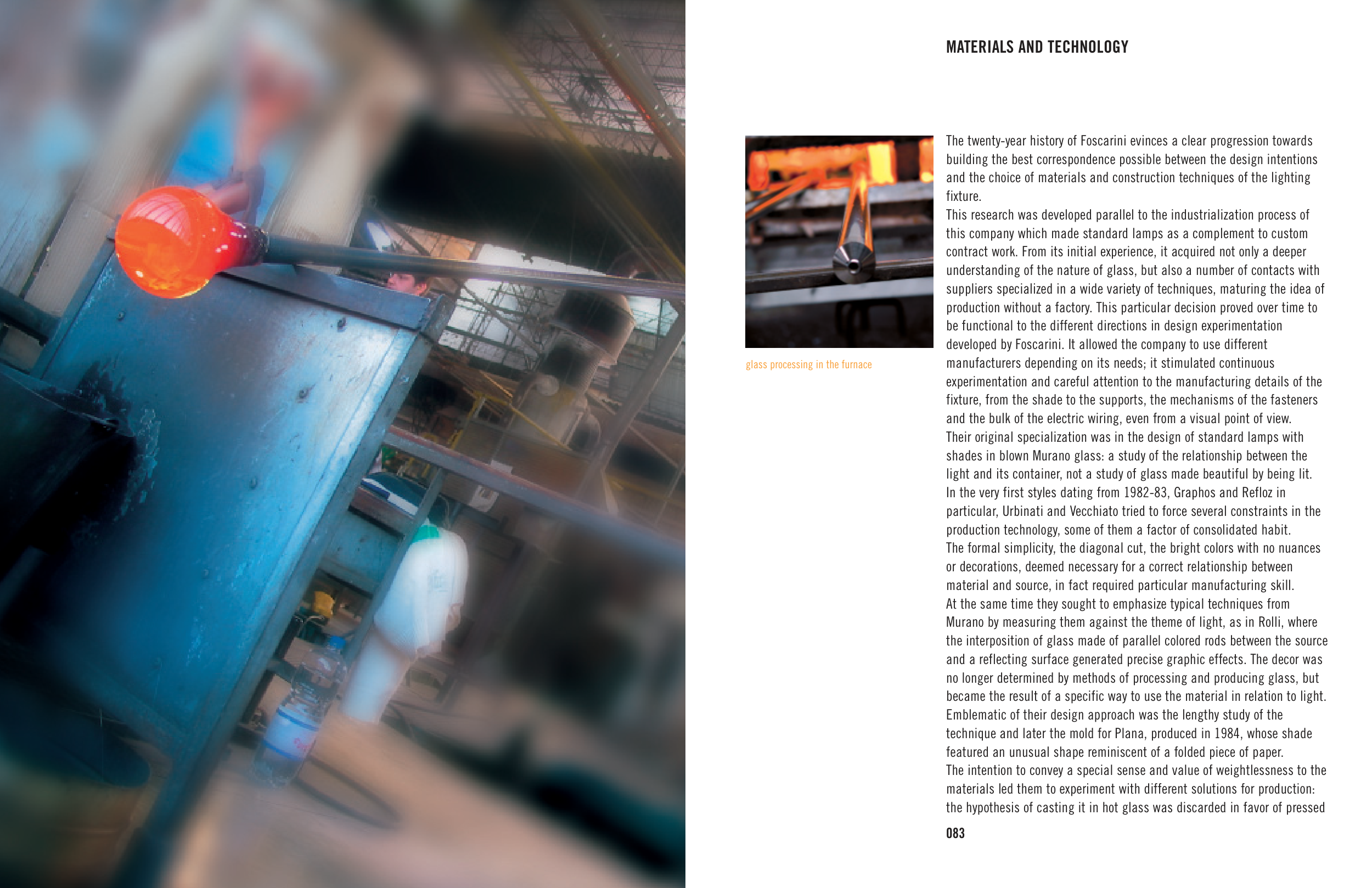083
glass processing in the furnace
MATERIALS AND TECHNOLOGY
The twenty-year history of Foscarini evinces a clear progression towards
building the best correspondence possible between the design intentions
and the choice of materials and construction techniques of the lighting
fixture.
This research was developed parallel to the industrialization process of
this company which made standard lamps as a complement to custom
contract work. From its initial experience, it acquired not only a deeper
understanding of the nature of glass, but also a number of contacts with
suppliers specialized in a wide variety of techniques, maturing the idea of
production without a factory. This particular decision proved over time to
be functional to the different directions in design experimentation
developed by Foscarini. It allowed the company to use different
manufacturers depending on its needs; it stimulated continuous
experimentation and careful attention to the manufacturing details of the
fixture, from the shade to the supports, the mechanisms of the fasteners
and the bulk of the electric wiring, even from a visual point of view.
Their original specialization was in the design of standard lamps with
shades in blown Murano glass: a study of the relationship between the
light and its container, not a study of glass made beautiful by being lit.
In the very first styles dating from 1982-83, Graphos and Refloz in
particular, Urbinati and Vecchiato tried to force several constraints in the
production technology, some of them a factor of consolidated habit.
The formal simplicity, the diagonal cut, the bright colors with no nuances
or decorations, deemed necessary for a correct relationship between
material and source, in fact required particular manufacturing skill.
At the same time they sought to emphasize typical techniques from
Murano by measuring them against the theme of light, as in Rolli, where
the interposition of glass made of parallel colored rods between the source
and a reflecting surface generated precise graphic effects. The decor was
no longer determined by methods of processing and producing glass, but
became the result of a specific way to use the material in relation to light.
Emblematic of their design approach was the lengthy study of the
technique and later the mold for Plana, produced in 1984, whose shade
featured an unusual shape reminiscent of a folded piece of paper.
The intention to convey a special sense and value of weightlessness to the
materials led them to experiment with different solutions for production:
the hypothesis of casting it in hot glass was discarded in favor of pressed


